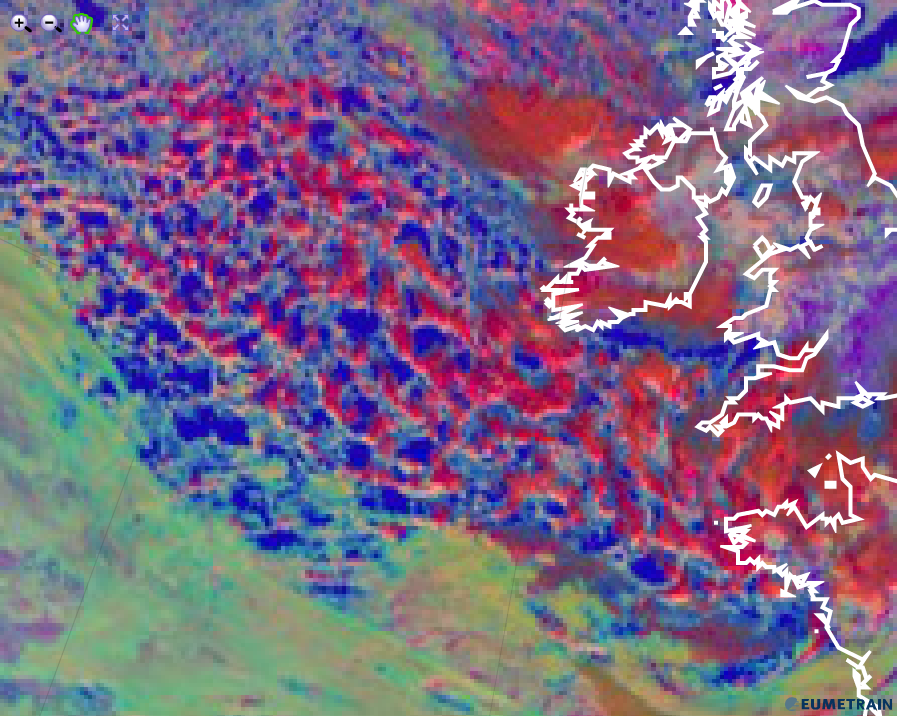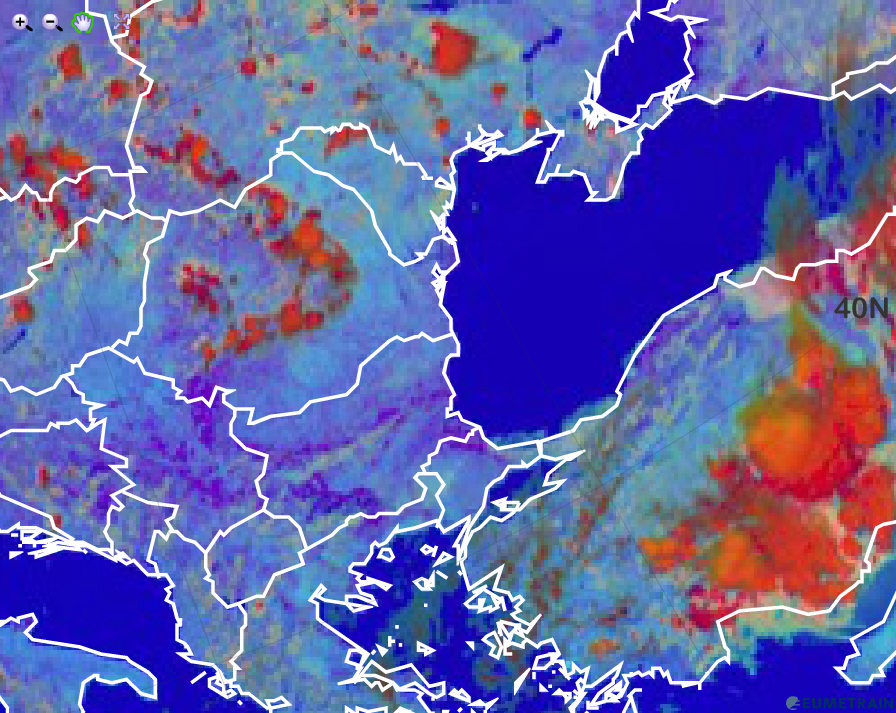Large ice particles
Large ice particles depict in red in the Day Microphysics RGB images.
The red colour of large ice particles in the Day Microphysics RGB images stems from a strong red contribution of the 0.8 micrometer channel. Large ice crystals strongly reflect short wave solar radiation.
The contribution of the solar component of the IR3.9 channel is very weak. The contribution from channel IR3.9 depends on ice/water phase as well as on drop size. Small ice crystals stronger reflect short wave solar radiation than large ice crystals. Large ice crystals absorb solar radiation at 3.9 micrometer nearly completely, hence the green colour contribution is very weak.
As the cloud tops are extremely cold, there is almost no contribution from the blue colour beam.
The red parts of convective cells contain large ice crystals which are a sign for slowly developing convective cells or for cells which came to the end of their life cycle (e.g. decaying CBs). The image below shows capped convection over the Atlantic within cold air.

HRV Cloud RGB from 9 February 2016, 12:00 UTC
As far as convection is concerned, the Day Microphysics RGB helps discerning active from less active parts of the convective cell. The larger the ice cristals on top of the cloud, the longer they have been up in the air and the absence of small ice particles generally indicates the decaying stage of the cell.

Day Microphysics RGB from 2 June 2015, 12:00 UTC
Explanation of the red colour of large ice particles in the Day Microphysics RGB (see the recipe):
The red signal for large ice crystals comes from the VIS0.8 channel only. Large ice crystals absorb short wave solar radiation at 3.9 micrometer.

